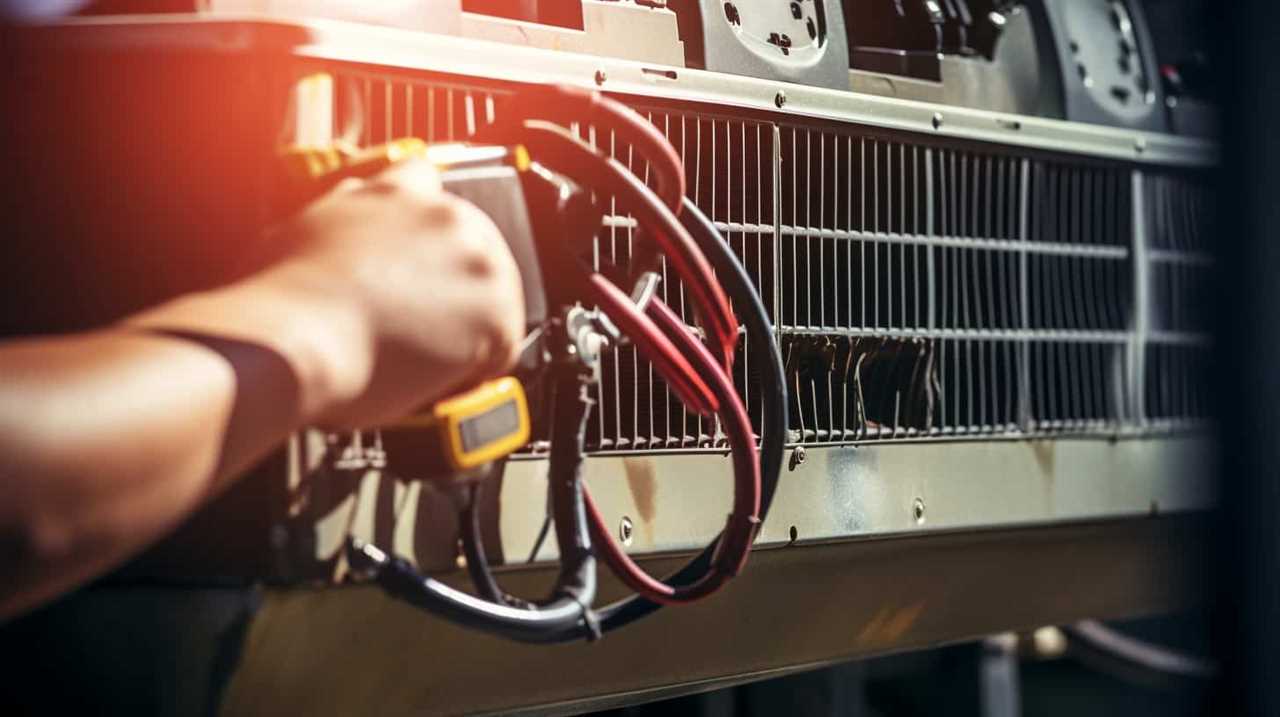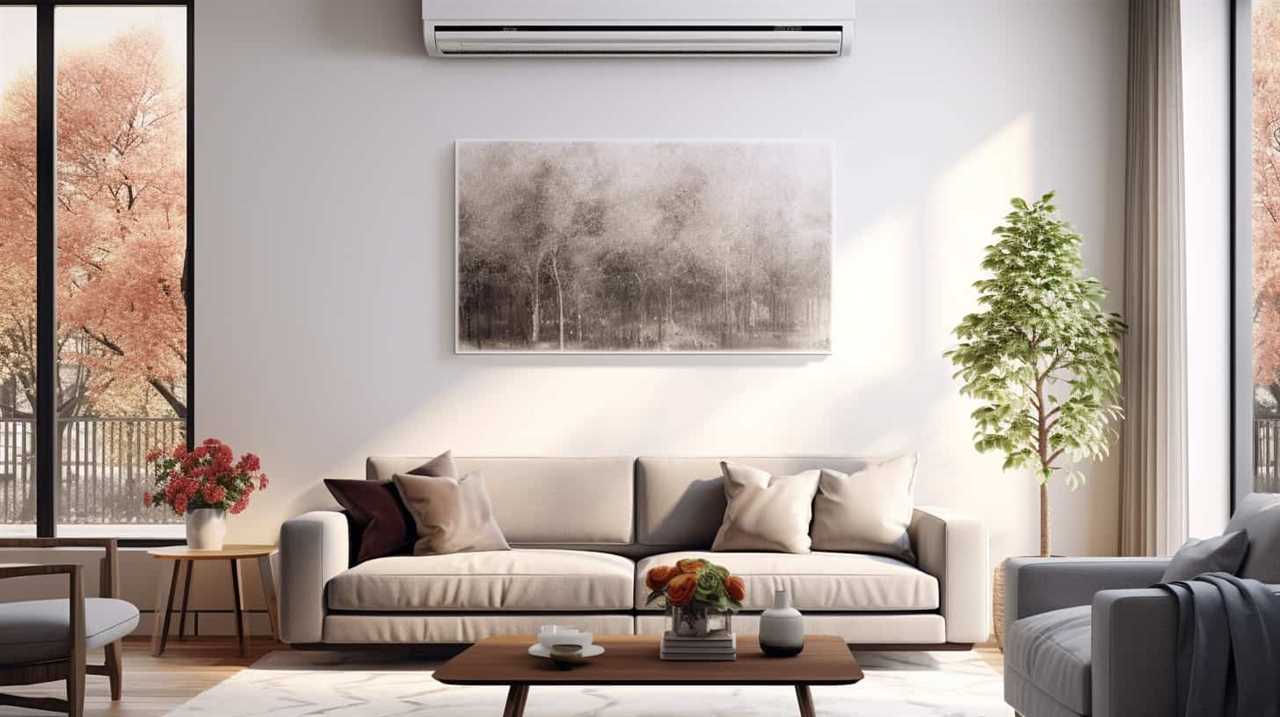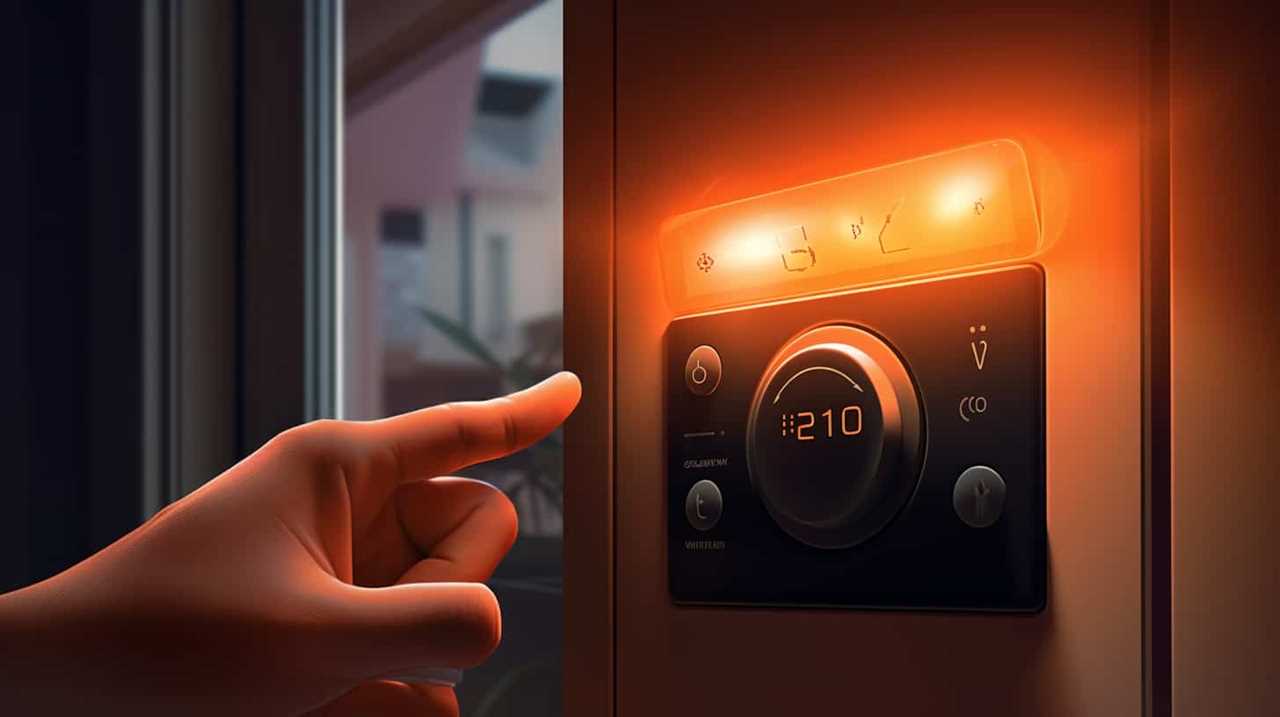We’ve all heard the rumors about the energy efficiency of heat pumps. But today, we’re here to debunk those myths and provide accurate information.
In this article, we’ll unveil the truth behind the myths and debunk common misconceptions.
We’ll dive into the importance of energy efficiency ratings, explore key metrics like SEER and HSPF, and even discuss the impact of climate on heat pump efficiency.
So, if you’re looking to choose the most energy-efficient heat pump model, stick with us. We’ve got the facts you need.

Key Takeaways
- Energy efficiency ratings (SEER and HSPF) are important in evaluating heat pump performance.
- Higher energy efficiency ratings can lead to long-term savings and outweigh higher upfront costs.
- Advanced features, like variable-speed compressors, enhance heat pump efficiency.
- Consider factors such as climate, humidity levels, and size of the heat pump when choosing the most energy-efficient model.
The Importance of Energy Efficiency Ratings in Heat Pump Models
We believe that energy efficiency ratings are crucial in evaluating the performance of heat pump models.
When it comes to heat pump energy efficiency, maintenance plays a significant role. Regular maintenance ensures that the system operates at its optimal efficiency level, reducing energy consumption and lowering utility costs.
Additionally, the benefits of smart technology can’t be overlooked in improving heat pump efficiency. Smart thermostats and advanced control systems allow homeowners to easily monitor and adjust their heat pumps, optimizing energy usage and maximizing comfort. By incorporating smart technology, heat pumps can adapt to changing conditions, adjusting their performance accordingly. This not only improves energy efficiency but also enhances overall system performance.
Now that we understand the importance of energy efficiency ratings and the role of maintenance and smart technology, let’s dive deeper into understanding the key metrics for heat pump efficiency: SEER and HSPF.

Understanding SEER and HSPF: Key Metrics for Heat Pump Efficiency
Let’s explore the key metrics for heat pump efficiency: SEER and HSPF. These metrics are essential in understanding a heat pump’s performance and its ability to save energy. Here are four important points to keep in mind:
-
SEER (Seasonal Energy Efficiency Ratio) measures the cooling efficiency of a heat pump. The higher the SEER rating, the more energy-efficient the heat pump is.
-
HSPF (Heating Seasonal Performance Factor) measures the heating efficiency of a heat pump. A higher HSPF rating indicates better energy-saving technology.
-
Both SEER and HSPF ratings are determined by laboratory tests under specific conditions, so they provide a standardized way to compare heat pump models.

-
It’s important to consider both SEER and HSPF ratings when choosing a heat pump, as they reflect its overall efficiency and performance in both cooling and heating modes.
Understanding these metrics will help you make an informed decision when selecting a heat pump that meets your energy-saving needs.
Debunking the Myth: Higher Energy Efficiency Ratings Mean Higher Costs
Higher energy efficiency ratings don’t necessarily mean higher costs when it comes to heat pumps. In fact, opting for a heat pump with a higher energy efficiency rating can actually lead to long-term savings.
While it’s true that heat pumps with higher ratings may have a higher upfront cost, the impact of installation is outweighed by the potential savings in energy consumption over time. Heat pumps with higher energy efficiency ratings are designed to provide better performance, which means they require less energy to operate and can significantly reduce monthly utility bills.

Additionally, these energy-efficient heat pumps often come with advanced features that further enhance their efficiency, such as variable-speed compressors and advanced control systems.
Exploring the Impact of Climate on Heat Pump Energy Efficiency
In warmer climates, the climate’s effect on heat pump energy efficiency can be significant. Factors such as high temperatures and humidity can impact the performance of heat pumps, making it crucial to optimize their performance in these conditions.
Here are four key considerations to bear in mind:
-
Increased workload: Higher temperatures require heat pumps to work harder to extract heat from the air, resulting in decreased overall energy efficiency.

-
Reduced capacity: High humidity levels can reduce the capacity of heat pumps to transfer heat effectively, leading to decreased performance and higher energy consumption.
-
Shorter lifespan: Extreme temperatures and humidity can put additional strain on heat pump components, potentially reducing their lifespan and increasing maintenance costs.
-
Demand response impact: In regions with high energy demand during peak summer hours, heat pump performance may be affected due to reduced available electricity.
Understanding these climate-related factors is crucial for optimizing heat pump energy efficiency in warmer climates.

Tips for Choosing the Most Energy-Efficient Heat Pump Model
One important tip is to consider the SEER rating when choosing the most energy-efficient heat pump model. SEER stands for Seasonal Energy Efficiency Ratio and it measures the cooling efficiency of the heat pump. A higher SEER rating indicates a more energy-efficient model.
Another tip is to look for the Energy Star label. Heat pumps with this label have been certified by the Environmental Protection Agency for their energy efficiency.
It’s also important to consider the size of the heat pump. Choosing the right size for your space ensures that it operates efficiently and effectively.
Additionally, opting for a heat pump with a variable-speed compressor can greatly increase energy efficiency. These models adjust their speed based on the heating or cooling needs, resulting in less energy consumption.

Lastly, it’s recommended to consult with a professional to determine the most energy-efficient heat pump model for your specific needs.
Frequently Asked Questions
How Long Do Heat Pumps Typically Last?
Heat pump lifespan can vary depending on factors such as maintenance, usage, and climate conditions. Understanding these factors is crucial for maximizing heat pump longevity and ensuring efficient performance throughout its expected lifespan.
Can a Heat Pump Be Used as the Sole Source of Heating and Cooling for a Home?
Yes, a heat pump can be used as the sole source of heating and cooling for a home. It can be integrated with solar panels for added efficiency and can utilize geothermal energy, making it a sustainable option.
Are There Any Government Incentives or Rebates Available for Purchasing Energy-Efficient Heat Pump Models?
Yes, there are government incentives and rebates available for purchasing energy-efficient heat pump models. These programs aim to promote the adoption of eco-friendly technologies and provide financial support to individuals or businesses investing in energy-efficient heating and cooling systems.

Are Certain Brands or Manufacturers Known for Producing More Energy-Efficient Heat Pumps?
Top-rated manufacturers play a crucial role in producing more energy-efficient heat pumps. Factors such as size, technology, and SEER rating significantly impact the efficiency of these systems.
What Maintenance Is Required to Ensure Optimal Energy Efficiency of a Heat Pump?
Heat pump maintenance tips are crucial for optimal energy efficiency. Common misconceptions about heat pump energy efficiency often overlook the importance of regular filter cleaning, coil maintenance, and professional inspections.
Conclusion
In conclusion, understanding the importance of energy efficiency ratings and debunking common myths can help us make informed decisions when choosing a heat pump model.
Just like a well-insulated home keeps us warm in winter and cool in summer, an energy-efficient heat pump can provide comfort while reducing energy consumption.

By considering factors like SEER and HSPF ratings and the impact of climate, we can select the most efficient model that not only saves money but also contributes to a greener future.









